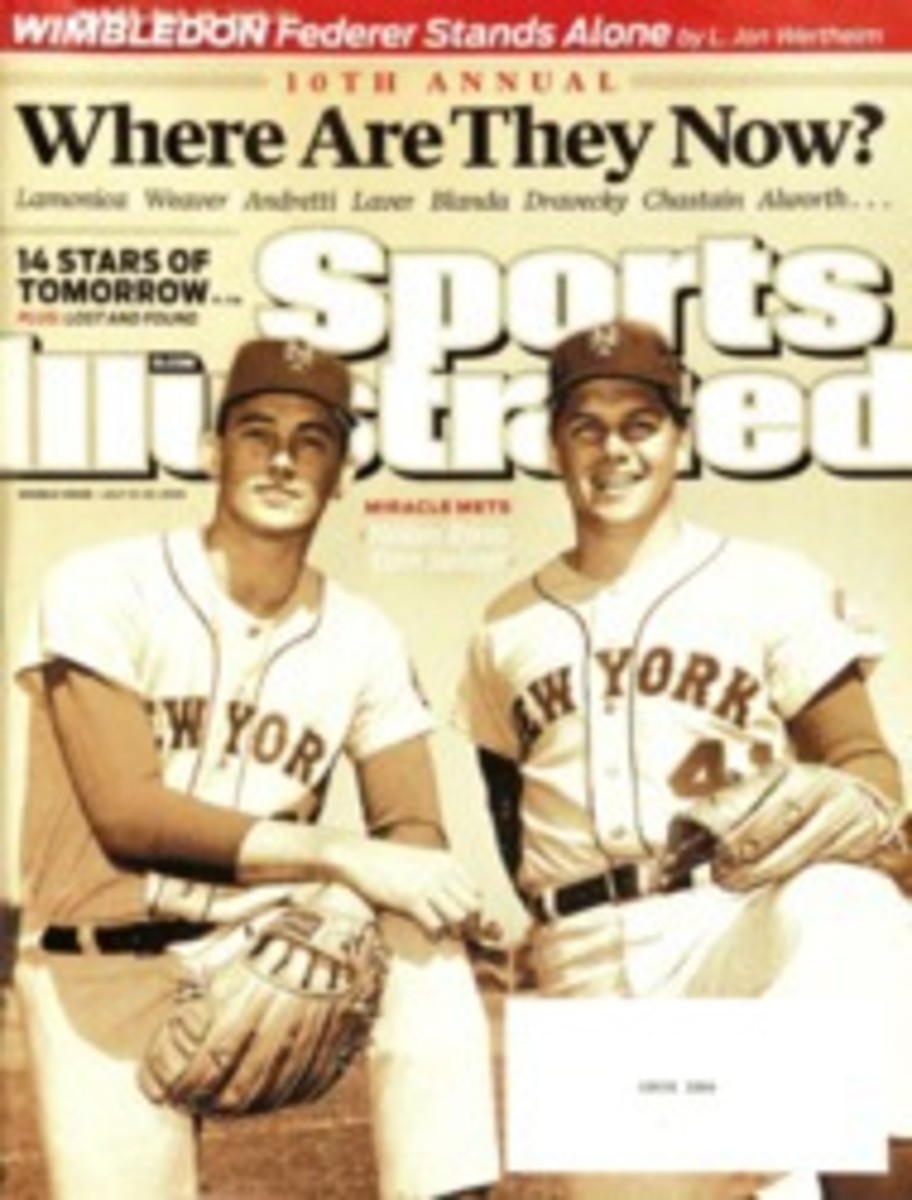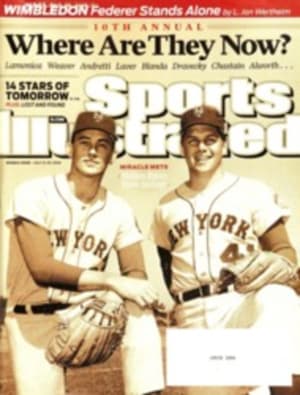
Lance's Mixed Message
I noticed the man in the wheelchair had the middle-aged-rocker look down cold, with his thinning, long locks and a wardrobe of vintage T-shirts, as I walked by him during July 2005, on my way to my father's room in a Tallahassee, Fla., hospice. My dad's bed was surrounded—standing room only most days—as he told jokes till the end of what he called his farewell tour. (I couldn't laugh at that one.) The rocker was always alone. By far the youngest of the dying, he was wheeled around with an oxygen tank into the community room, where picture windows offered a view of a parklike backyard and where I spent a fair amount of time stress-eating out of the vending machines. So I saw the rocker a lot. He had no visitors. "Too much for some families," a nurse told me.
On television that July, Lance Armstrong was a ubiquitous vision on his way to his seventh Tour de France sip of victory champagne, charging through the Pyrenees on his bike, his hydraulic legs pumping as he huffed and puffed air through the valleys of his cheeks. It's unclear whether the rocker knew how Armstrong—the most famous cancer survivor of them all—was performing through each stage. ("Kind of a football fan," he said with a smile.) But he felt Lance whenever he twisted and rubbed his yellow LIVESTRONG wristband. He had end-stage cancer, like my father, but the rocker was holding on to Lance, who was with him when no one else was. For the first time, I realized Lance Armstrong wasn't just an elite athlete. He was a faith—a spirituality that could comfort the afflicted no matter the doubts (who can ride to seven Tour titles clean?) that have been attached to him.
The tao of Lance is powerful, and it's a belief best imparted with grace, not spite. That's why it's unsettling to view Armstrong's newest Nike ad—a 63-second commercial released last week called Driven, scheduled to run as the 37-year-old Armstrong emerges from retirement to compete in his first Tour since 2005. The spot opens with a black-and-white image of a patient being scanned by a machine, then cuts to Lance as a colorful, blurred figure on his bike. The commercial is spliced with these moving pictures: Armstrong riding and another bald patient rising from a bed, Armstrong churning and a patient breathing through an oxygen mask. Throughout this emotional montage Lance, in a voice-over, speaks in an unyielding tone: "The critics say I'm arrogant ... a doper ... washed-up ... a fraud ... that I couldn't let go.... They can say whatever they want.... I'm not back on my bike ... for them."
It is a high-quality, high-impact commercial. Yet its inspirational value—and the images of the patients as they progress toward recovery are indelible—is unnecessarily ribboned with another not-so-subtle message: To scrutinize Armstrong is to criticize his cause; to be skeptical of Armstrong is to be anticure. It's as if he's saying there should be no separation between man and messiah, between a champion in a dirty sport and an activist in a virtuous role.
By rite of passage, career saviors, whether they be clergymen or politicians, public advocates or Lance, carry a burden of transparency far greater than their followers. This is not about how many times Armstrong will be drug-tested during the Tour de France—and as the French health and sports minister, Roselyne Bachelot, has said, Lance will be "particularly monitored" during the 21-stage race that began last Saturday and concludes with a procession up the Champs-Élysées on July 26—but how testy he gets when dissected. The Nike ad is only a snippet of his recent snippiness with critics and critiques.
In May, after the Italian media labeled him the instigator of a rider protest over race conditions at the Giro d'Italia, he retreated to Twitter. (His cancer message was hard to disseminate when he avoided the media for two weeks.) A month later he hurled an elbow at another detractor, perceived or real: Responding to a Wall Street Journal story on his feud with Greg LeMond, Armstrong, in a letter to the editor posted on his Livestrong blog, described the reporting as inaccurate and inept and falling short of journalistic standards. "In short, Greg LeMond is involved with several 'feuds,'" Armstrong wrote, listing trainers and companies the three-time Tour de France champion has sued, as if litigation had never occurred to Lance. "[LeMond] may be in a feud with me, but I am not involved in a feud with him," continued Armstrong, in language that sounded oddly feudlike. "I am focused on cancer survivors, their families and my return to cycling."
He can't seem to resist using the cancer cause to parry his skeptics. Armstrong is better than this, blessed with an amazing gift to heal. Lacing a positive vibe of hope with a negative dig isn't inspirational; it's off message. The rocker in the wheelchair wasn't holding on to the embittered cyclist but the soothing inspiration.
For three weeks Armstrong will command the attention and the microphones during the Tour no matter how he finishes, given a platform to use as he wishes. Will he diminish the power he has for good by engaging in gotchas?
Talk Back
If you want to comment on Point After or suggest a topic, send an e-mail to PointAfter@si.timeinc.com
Armstrong's inspiring ad is ribboned with a not-so-subtle concept: To scrutinize him is to criticize his cause; to be skeptical of him is to be anticure.
ILLUSTRATION
ILLUSTRATION BY KAGAN MCLEOD

